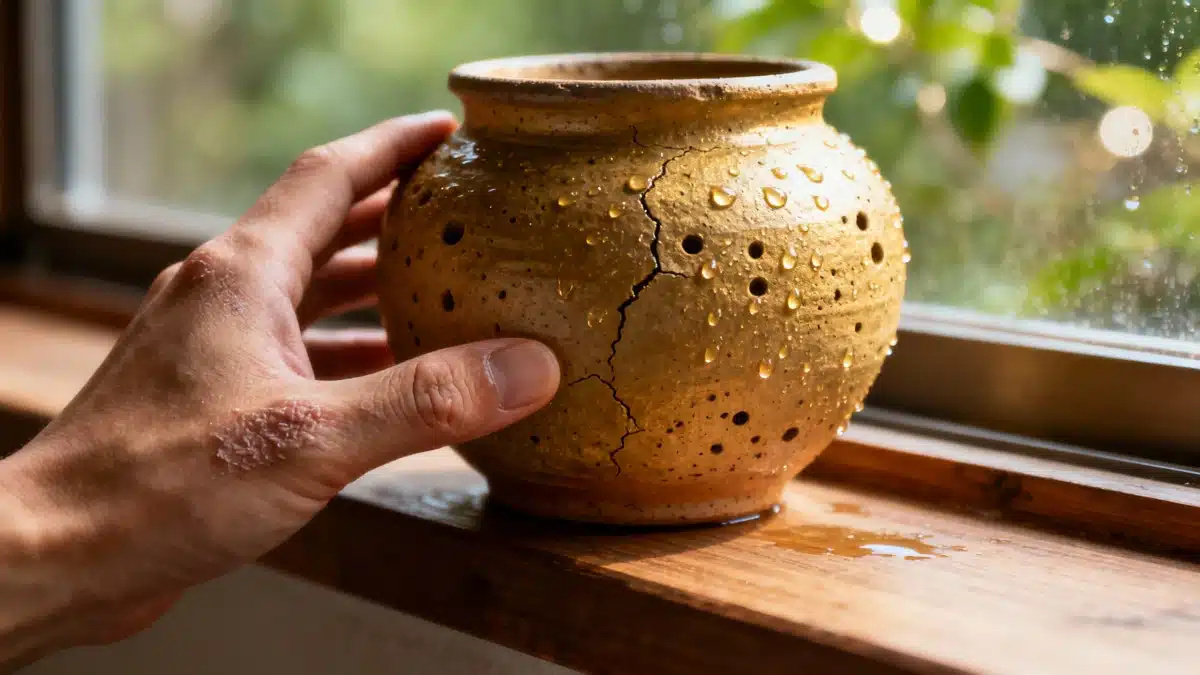Is winter making your home feel less like a cozy retreat and more like a damp basement? Tired of finding musty-smelling clothes, spotty mold on your walls, or a chill that cuts right through your favorite sweater? Here’s the little-known Japanese clay trick that transforms your indoor climate—without eating up your savings or soaking your house in chemicals!
Why Is Your Home Extra-Damp in Winter?
Ever wonder why every winter your house feels suspiciously clammy? There’s usually more than one culprit. Sometimes it’s shoddy insulation that lets in cold air, making condensation pop up everywhere (especially those lovely foggy windows you’ve grown to not love). Other times, poor ventilation does the dirty work—steam from your kitchen escapades or morning showers can’t escape, so it lingers and settles in.
- Water building up on walls leads to mold and those classic closed-room odors. Not exactly ambiance.
- Cracks in the exterior, or maybe a collection of houseplants channeling their inner Amazon, can crank up humidity too.
- This cocktail brings you a heavy, almost tropical (but never in a good way) feeling indoors.
Classic Fixes Versus The Clever Japanese Clay Trick
When faced with such sticky discomfort, it’s tempting to grab those chemical-laden moisture absorbers from the supermarket shelf. But there are natural, health- and eco-friendly fixes that also keep your wallet healthy. For ages, simple coarse salt has been a kitchen-table staple for sopping up extra moisture. Another trick out of Japan? Popping a few pots of dry rice here and there; it dries the air, but can reach its limits when things get super soggy or stay humid too long.
And while an ice cube might cool the air on a hot, humid day, that’s no help in winter, when you want to keep things warm but dry out the excess water.
- Coarse salt: Traditional and reliable, ideal for milder cases.
- Rice pots: Handy, especially for short-term or moderate humidity.
- Ice cube technique: Mostly for summer—unless you’re a penguin, then carry on.
This is where the Japanese-inspired crushed clay method shines: effective, easy, reusable, and totally low on fuss.
Transforming Clay into a Mighty Dehumidifier—DIY Style
Crushed clay’s moisture-mopping reputation isn’t new. Long used for cleaning up and drying out waterlogged areas, it’s deservedly getting home fame now. Forget complicated gadgets! Creating a natural clay dehumidifier is so simple, even your least-handy relative can manage:
- Grab a 1.5-liter plastic bottle. Cut it about two-thirds up. Flip the top part upside down into the lower section—hello, makeshift funnel.
- Stuff a clean cloth in the bottle neck. It’ll stop the clay bits from escaping while letting water drip down freely as it’s absorbed.
- Fill the funnel part three-quarters full with crushed clay—easily sourced at organic shops and even some supermarkets’ natural aisles.
Fun fact: If you’re into plants prone to drama around humidity, like bougainvillea, keeping air moisture in check is key for propagation, too.
Once set up, put your new device wherever humidity likes to loiter: the bathroom, kitchen, laundry nook, living room—or even your bedroom. The clay immediately sets to work guzzling up airborne moisture. Water will gradually gather in the bottom chamber. When it fills, just empty it, swap in new dry clay, and you’re back in business. Simple, eco-friendly—no need for a degree in engineering.
Location is half the magic. Place your clay trap in:
- Dark corners
- Near windows with regular condensation
- Rooms lacking good airflow
Bathrooms and kitchens are obvious hot-spots, but don’t ignore a poorly ventilated living room or any space where steamy air from below likes to creep up.
Lasting Results with Minimal Effort
What makes this clay hack so lovable? Sheer simplicity and low maintenance. After each use, just replace soggy clay (it’ll turn soft) with fresh, dry chunks. Pour out the collected water down the drain, rinse the bottle, and in about three minutes total, you’re ready for several more days. Even better? Clay keeps on giving—just dry the used clay out (leave in open air or by a moderate radiator) and it regains its full power. It’s built to be used again and again.
For die-hard experimenters (or those with stockpiles to use up), there are economical twists to this idea:
- Activated charcoal is another favorite for purifying and drying air.
- Big grains of salt in saucers, placed all around humid-prone rooms, work on the same moisture-attracting principle.
- For those who can’t choose: mix coarse salt and clay in one container—the tag-team can surprise you!
No matter your style, crushed clay stands out for being both pocket- and planet-friendly, and if you crave banishing mold and persistent odors for good, it’s an ally you want in your winter toolkit.
Final tip: Never forget, keeping absorbent materials and anything meant to produce heat dry is key. Otherwise, you’ll open your pellet stash from last winter only to find a sorry, soggy heap. With the Japanese clay trick in hand, you’re set for a healthier, fresher, and way less damp winter indoors—no gadgets or caustic chemicals required!

John is a curious mind who loves to write about diverse topics. Passionate about sharing his thoughts and perspectives, he enjoys sparking conversations and encouraging discovery. For him, every subject is an invitation to discuss and learn.






